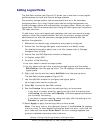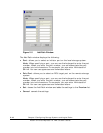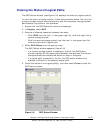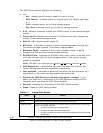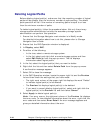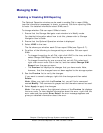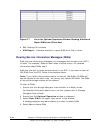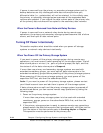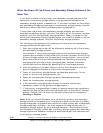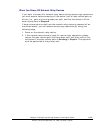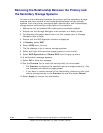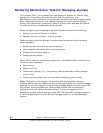
Chapter 5 Configuring Storage Systems and Logical Paths 5-23
Hitachi Universal Replicator for IBM /OS User’s Guide
Managing Power for Storage Systems and Network
Relay Devices
This appendix explains power management for storage system s and network
relay devices during remote copy operations. In particular, this appendix
discusses the following:
• What happens when power is removed from storage systems or network
relay devices due to some unexpected reason (see the next section).
• What should be noted when you power off storage systems or network
relay devices intentionally (see section
Turning Off Power Intentionally)
Here, the term "network relay devices" refers to hardware used for connecting
the primary and secondary storage systems, such as ESCON directors, channel
extenders, and switches.
When Power Stops Unexpectedly
This section explains what happens when power is removed from storage
systems or network relay devices due to some unexpected reason.
When the Power is Removed from the Primary Storage System
If power is removed from the primary storage system during remote copy
operations, the primary storage system assumes that a failure occurs, and
then splits all data volume pairs. If the primary storage system splits data
volume pairs, the secondary storage system also assumes that a failure occurs,
and then splits all data volume pairs.
If power is removed from the primary or secondary storage system and its
backup batteries are fully discharged while data volume pairs are split,
differential data (i.e., update data) will not be retained. In this unlikely case,
the primary or secondary storage system assumes all the suspended data
volumes are updated. If you restore the data volume pairs at the primary site,
all the primary data volumes will be copied to the secondary data volumes.
When the Power is Removed from the Secondary Storage System
If power is removed from the secondary storage system during remote copy
operations, the secondary storage system assumes that a failure occurs, and
then splits all data volume pairs. If the secondary storage system splits data
volume pairs, the primary storage system also assumes that a failure occurs,
and then splits all data volume pairs.



